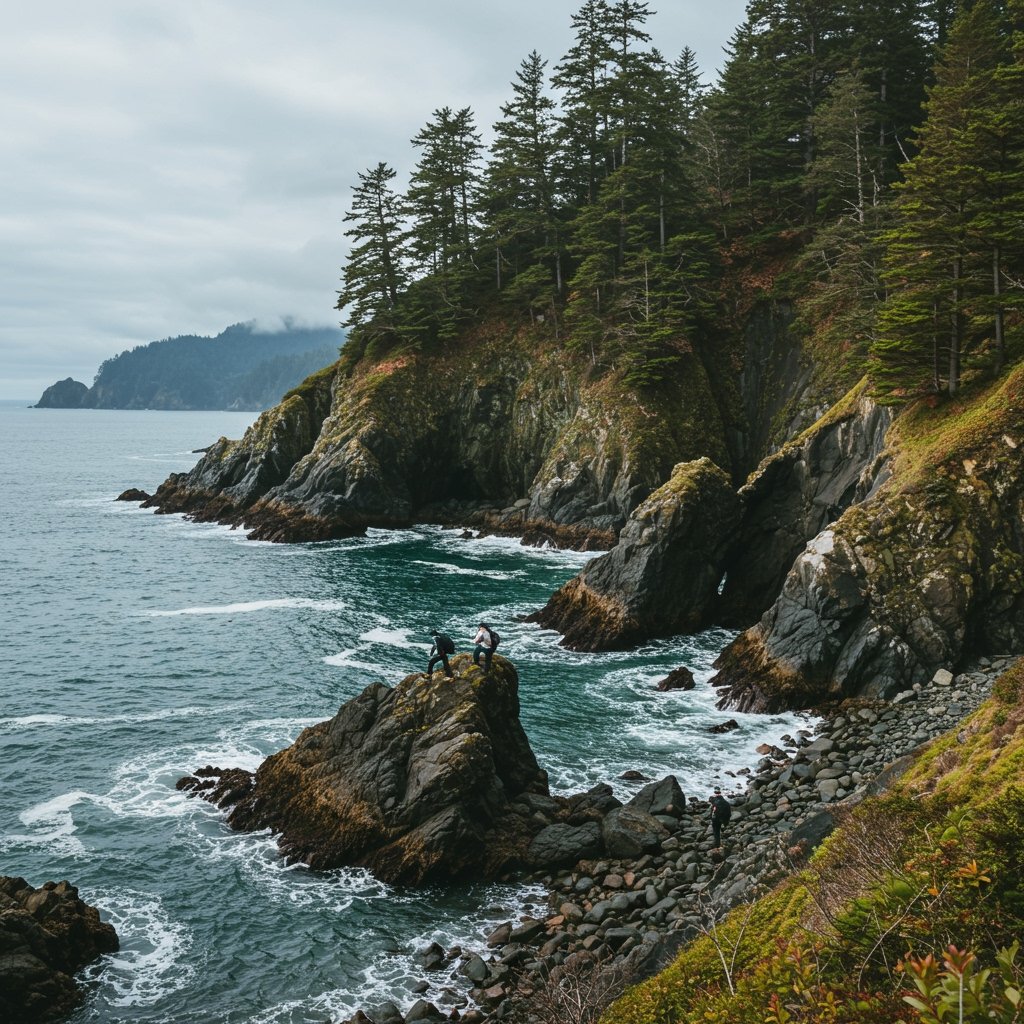West Coast Tourism Leaders Convene in Seattle to Address Proposed Coastal Access Fees
SEATTLE, WA – Major stakeholders representing the vibrant tourism economies of California, Oregon, and Washington gathered this week in Seattle for a pivotal summit focused on the potential economic ramifications of newly proposed state-level coastal access fees. The high-stakes meeting brought together a diverse group of industry representatives, environmental advocates, and state legislators to openly discuss a proposal aimed at funding critical climate resilience initiatives but which the tourism sector fears could significantly deter visitors.
The proposed fees are a key component of a broader strategy championed by environmental organizations, most notably the Pacific Climate Alliance. This alliance and its supporters argue that dedicated funding is urgently needed to finance essential infrastructure upgrades and comprehensive ecological restoration efforts along the Pacific coastline. These projects are deemed necessary to effectively combat the accelerating impacts of climate change, including rising sea levels and coastal erosion, which pose direct threats to iconic destinations and the infrastructure that supports coastal communities and tourism.
Funding Climate Resilience: The Environmental Imperative
The Pacific Climate Alliance asserts that years of insufficient funding have left coastal areas vulnerable to the increasing severity and frequency of climate-related impacts. They highlight the critical need for investments in nature-based solutions, such as restoring dune systems and wetlands, as well as fortifying infrastructure like roads, bridges, and public access points that are increasingly threatened by coastal inundation and erosion. Specific vulnerable areas mentioned in discussions include world-renowned tourist hotspots like Big Sur in California and Cannon Beach in Oregon, where the natural landscape and supporting infrastructure are vital to the tourism appeal.
The Alliance posits that a user-based fee system, applied at key coastal access points, represents a sustainable and equitable method for generating the necessary capital. They argue that those who benefit directly from accessing the coast should contribute to its preservation and adaptation for future generations.
Industry Concerns: Potential Economic Fallout
While acknowledging the undeniable reality of climate change and the need for adaptation, representatives from the tourism industry expressed significant apprehension regarding the potential adverse effects of the proposed fees on visitor numbers and, consequently, revenue. Leading industry bodies, including the West Coast Tourism Association, alongside major lodging operators like Coastal Resorts Group, articulated concerns that the added cost could make West Coast destinations less competitive compared to other travel options.
Industry spokespersons presented internal projections suggesting a potentially significant drop in visitor numbers. Based on their analysis, the fees could lead to a 15-20% decrease in revenue during the crucial peak season. They argued that tourism is a highly price-sensitive market, and even a modest fee could act as a deterrent, particularly for families and budget-conscious travelers. This potential revenue decline, they warned, could have cascading effects on local economies, impacting employment in hotels, restaurants, retail, and recreational services that rely heavily on tourist spending.
The industry representatives urged lawmakers and environmental groups to consider alternative or supplementary funding mechanisms, such as state appropriations, federal grants, or targeted taxes that might have less direct impact on visitor volume. They emphasized the industry’s willingness to be part of the solution but stressed that the proposed fee structure, as currently envisioned, could inadvertently harm the very coastal communities it aims to protect by undermining their economic base.
Legislative Landscape and the Path Forward
The presence of state legislators at the Seattle summit underscored the seriousness with which this proposal is being considered within governmental circles. Legislators from key districts, including California’s 3rd district and Oregon’s 7th district, participated actively in the discussions, listening to perspectives from both the environmental and tourism sectors. Their attendance signals that legislative action on coastal funding and potentially these access fees is firmly on the agenda.
Discussions highlighted the complexity of balancing urgent environmental needs with economic realities. While the environmental imperative for funding climate adaptation is clear, legislators face the challenge of crafting policy that is effective without crippling vital regional industries like tourism. The legislators indicated that the feedback gathered during the Seattle meeting would be crucial in informing the development of potential legislation.
The timeline for formal legislative proposals remains fluid, but expectations are that concrete action could begin to take shape by late 2025. The period leading up to this is expected to involve further stakeholder consultations, economic impact studies, and potential public forums to gauge broader sentiment.
Conclusion: Navigating a Complex Future
The Seattle summit served as a critical initial step in a complex dialogue about the future sustainability of the West Coast’s valuable coastline and its indispensable tourism economy. The proposed coastal access fees represent a direct response to the escalating threat of climate change, seeking to secure necessary funding for adaptation.
However, the tourism industry’s valid concerns regarding potential economic disruption highlight the challenges inherent in transitioning to a more climate-resilient future. Finding a solution that effectively funds coastal protection without jeopardizing the livelihoods dependent on tourism will require careful negotiation, innovative policy design, and continued collaboration between environmentalists, industry leaders, and policymakers across California, Oregon, and Washington.
The coming months are anticipated to be crucial as stakeholders work towards identifying mutually acceptable pathways to ensure both the ecological health and economic vitality of the treasured West Coast shoreline.



















